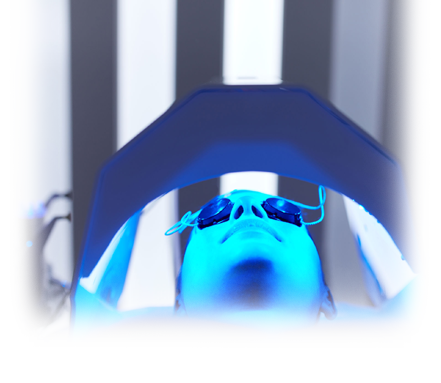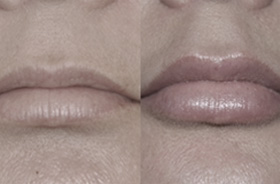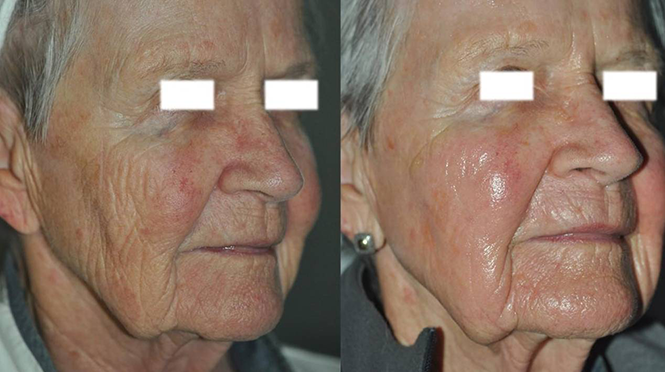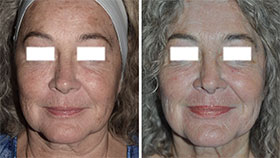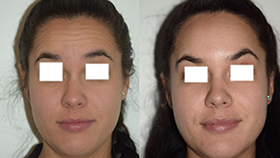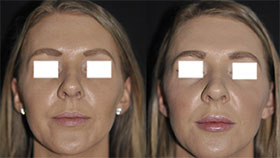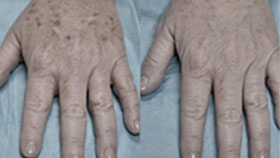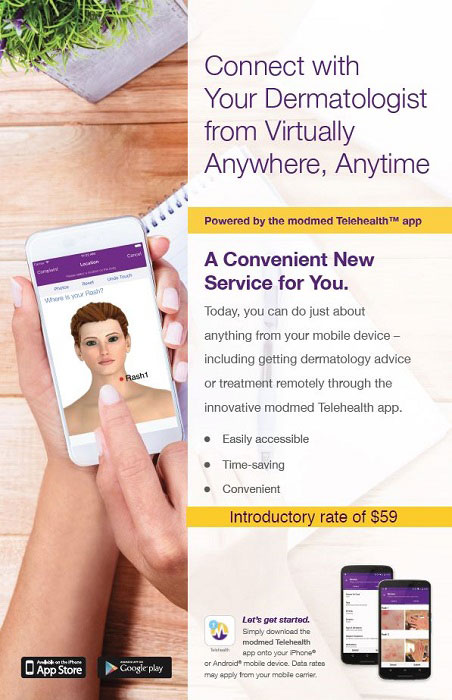Photodynamic Therapy
Light-Activated Medication for Marco Island and Naples, FL
Photodynamic therapy (PDT) at the Naples, FL, based Skin Wellness Physicians involves the use of a photosensitizing medication that, when activated by a light source, will result in a reaction. In medical dermatology or when getting cosmetic treatments, patients will often know this as "blue light" treatment, though that refers only to the light source. In fact there are many light sources that can be used for this treatment.
JUST THE FACTS
- Photodynamic therapy has two parts: application of a topical medication and activation with light
- Different wavelengths of light are used for different purposes, depending on a patient's needs
- This therapy can treat everything from persistent acne to pre-cancerous lesions to skin cancer
What Exactly is Photodynamic Therapy?
Photodynamic therapy at Skin Wellness Physicians involves the use of the medication known as Levulan®, dispensed to the physician in a stick known as the Kerastick® prior to application on the patient. On the day of the treatment, when treating actinic keratoses ("pre-cancers"), the skin is wiped dry or degreased with alcohol, and the Levulan® is applied using the Keratick®.
Levulan® is a precursor (aminolevulinic acid) of a metabolite that we make in the body naturally (protoporphyrin IX). We normally produce this metabolite at very low levels in the skin, but there are certain diseases that make this metabolite at high levels, and they therefore lead to the development of skin rashes in the sun. Interestingly, as a result of these skin reactions in sunlight, they very rarely develop skin cancers in the sun-exposed areas.
Once the medicine is applied, the photodynamic therapy patient is then instructed to either wait in the office or is permitted to leave the office for some time before being brought back by the clinical staff for light exposure. The length of time depends on the target of the photodynamic therapy treatment (i.e. actinic keratoses, skin cancers, acne, etc) and the light source (i.e. blue light, red light, intense-pulsed light). Once enough incubation has taken place where an expected level of the final metabolite has been built up in the skin, the photodynamic therapy patient is then exposed to the light source (usually red or blue light) for a pre-determined amount of time. The length of exposure time is usually dependent on the medical condition being treated and the light source being used.
Contact Skin Wellness Physicians about photodynamic therapy in Naples, FL, and Marco Island. Arrange a consultation by sending a message online or calling (239) 732-0044.
Why Have I Been Recommended Photodynamic Therapy?
There are several reasons your physician may have recommended photodynamic therapy. The most common reason to be prescribed PDT is for the treatment of pre-cancers, otherwise known as actinic keratoses. Actinic keratoses—or keratosis in the singular form—are the premalignant lesions of squamous cell carcinomas, the second most common form of skin cancer.
Squamous cell carcinomas often will start as a premalignant actinic keratosis and then transform into a malignant squamous cell carcinoma. While squamous cell carcinomas can form without having to go through the premalignant stage, by treating the skin affected with actinic keratoses, the theory is that you are treating the premalignant actinic keratoses and the skin that has yet to develop the clinical presentation of the actinic keratosis. This will be conveyed to the patient as treating the lesions that we see and those that we do not see yet.
To read more about the use and details of PDT, please visit our page on skin cancer.
What is the Difference Between Blue Light and Red Light in Photodynamic Therapy?
This is simple: depth. Blue light only penetrates the skin about 0.5mm, while red light penetrates about 2 to 3mm. Depending on the physician's clinical evaluation, he or she may determine that 0.5mm is enough or feel that a deeper treatment with photodynamic therapy would be beneficial.
In fact, the United States is the only country in the world where blue light is the leading light source in photodynamic therapy. This has to do with clinical trials. The company that makes the medication performed clinical trials using blue light so that it could patent blue light medical devices. Since red light was already an established therapy, there was no patent to be had. If a photodynamic therapy clinical trial was performed using blue light, then only blue light would be approved by the FDA, and therefore the patent would corner the market for the company.
The United States was late to implement photodynamic therapy in dermatology when compared to the rest of the world, and is the only country that primarily uses blue light as a result of the FDA approval. While red light is the standard of photodynamic therapy care globally, it is considered off-label in the United States.
Due to blue light's poor penetration, it is not a very good treatment for skin cancer, those at high risk for occult skin cancers, or acne. Therefore, red light is often chosen if your physician is considering one of these factors. If your physician feels your sun damage to be strictly superficial, blue light is an excellent option for photodynamic therapy.
What Can I Expect During a Photodynamic Therapy Treatment?
Exposure to the light source is usually uncomfortable, and we provide a skin cooling system known as a Zimmer cooler during photodynamic therapy sessions. It is more or less a sophisticated medical device that is like a powerful air conditioner on a hose that the patient can use to cool the skin while undergoing the photodynamic therapy treatment. If you are having the treatment on the face, particularly around the mouth or nose, the physician will often prescribe you a prophylactic dose of an anti-viral medication to avoid stimulating any cold sore breakouts.
Meet our Dermatologists

At Skin Wellness Physicians, our dermatologists are board certified and thoroughly experienced in a range of medical and cosmetic treatments.





What Can I Expect After a Photodynamic Therapy Treatment?
The treated skin after a photodynamic therapy session will often be bright pink or red. Some discomfort may be noted for up to 48 hours following a photodynamic therapy treatment. Some weeping, scaling, and slight scabbing may be noted depending on the severity of the sun damage. Usually, the worse the reaction is for the patient, the better the results will be. Typically, the worse the reaction, the worse the sun damaged skin was prior to photodynamic therapy treatment. As a result of improvement of the sun damaged skin following the session, subsequent photodynamic therapy treatments may be less intense. This phenomenon is usually seen at about the third treatment.
For acne patients, a severe whitehead or pustular response is usually noted following photodynamic therapy. This is a result of the sebaceous oil glands being very sensitive to the treatment, as they are the main target for the photodynamic therapy when treating acne and a sign of successful treatment. This may also happen to adults who are prone to adult acne.
The downtime for patients after photodynamic therapy is usually seven to 10 days.
At about the seven- to 10-day mark, one can expect significant scaling to take place in the treatment area.
As long as there is no open skin, one can wear makeup starting at about 48 hours.
Do I Have to Stay Out of the Sun Following a Photodynamic Therapy Treatment?
It depends. If you are uncomfortable in the sun, then stay out. If you are not uncomfortable, then you may be in the sun, but we recommend using sunscreen. The reason for the sun sensitivity following photodynamic therapy is that the medicine that has built up in the skin during the incubation period may not have been completely spent during the light exposure, therefore the skin can react with the sunlight. While this may result in some discomfort when in the sun for the first few days after the treatment, it is not a bad thing, but is in fact therapeutic.
Regardless of this trailing therapeutic reaction in the sun following the in-office photodynamic therapy procedure, we still recommend the use of sunscreen. A sunscreen that patients often enjoy following photodynamic therapy is Elta MD UV Clear. This product contains niacinamide that helps with red-sensitive skin, which is often the case following photodynamic therapy, and is an excellent zinc-based sunscreen for all other times as well.
How Many Photodynamic Therapy Treatments Will I Need?
Again, it depends on what we are treating. Actinic keratoses are usually treated three times for the best results and eight weeks apart because of insurance reasons. We recommend that acne be treated about six times. We often treat skin cancers twice.
Is There Any PDT Aftercare?
At Skin Wellness Physicians in Naples, FL, we strongly believe in the use of dilute vinegar soaks. We recommend a mixture of 1tbsp of white vinegar in 2 cups of water. A stock of this solution should be made and refrigerated. The cool application of vinegar compresses will often soothe and heal the skin after photodynamic therapy. Furthermore, the application of ointment-based emollients such as Vaseline or Aquaphor can be very soothing. We recommend refrigerating these items so that when applied, it is found to be very soothing.
Remember, the recommended supplies for post-photodynamic therapy comfort are store brand white vinegar, Aquaphor or Vaseline, and a physical sunblock, such as Elta MD UV Clear or Elta MD UV Physical.
Call (239) 732-0044 or send a message online to arrange a consultation to discuss photodynamic therapy in Naples, FL, and Marco Island at Skin Wellness Physicians.

